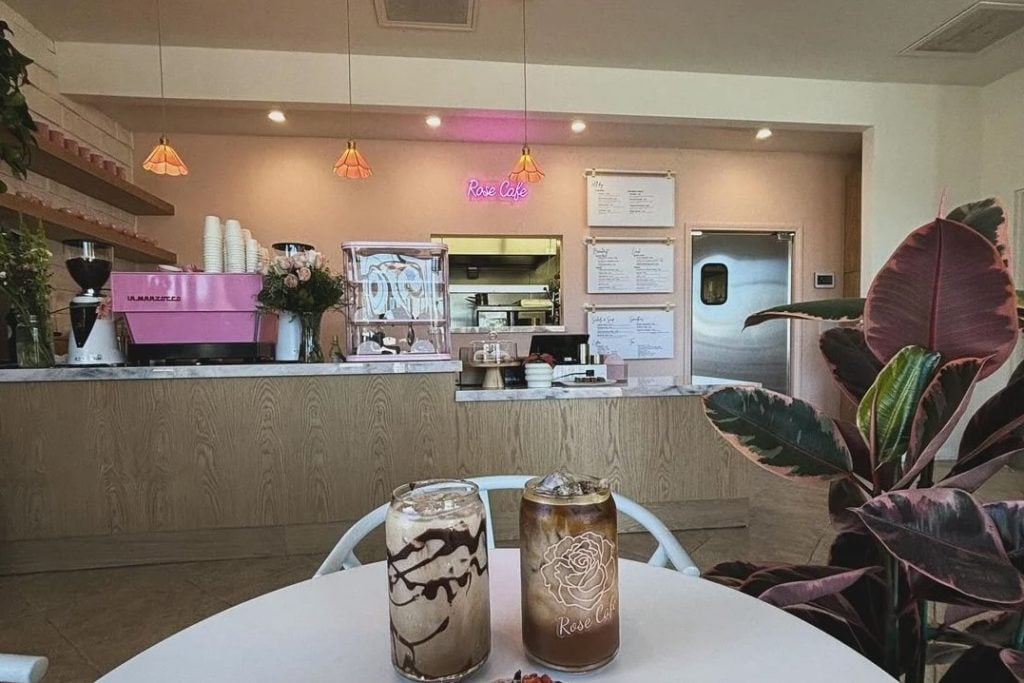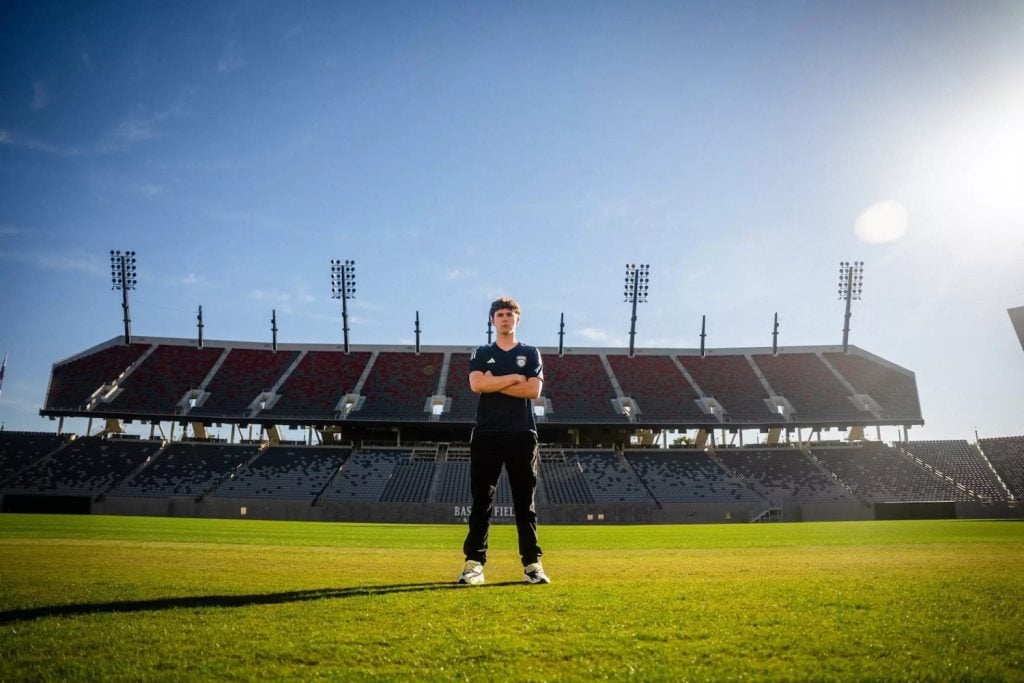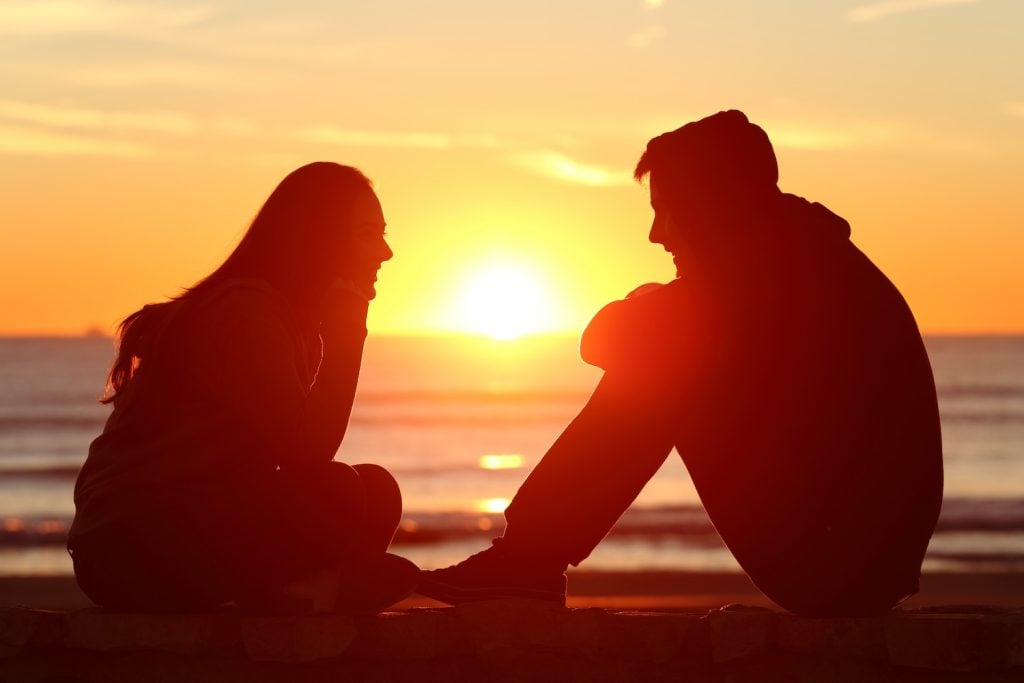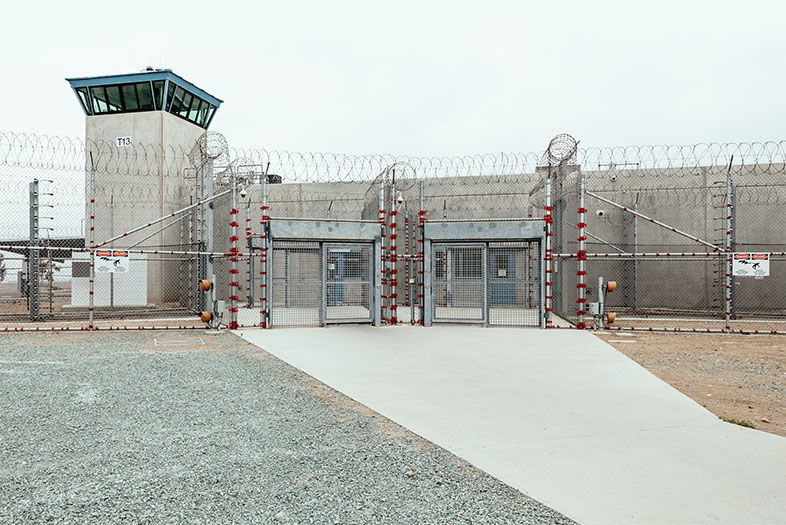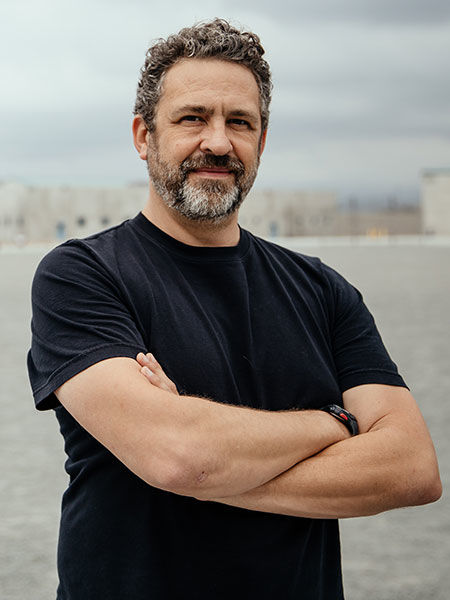
Finding Peace in a San Diego Prison
Bill Brown
Bill Brown is guiding a class of about 25 men through a series of long stretches and balanced poses in a dimly lit gymnasium. Mostly dressed in baggy gray sweatpants and white or gray T-shirts, they carefully follow his motions before reaching a seated position on thin lemon-lime yoga mats.
“See if you can bring some awareness into your breath. Listen to what your body is asking for. You are the authority on your experience,” Brown gently advises.
He invites student Ryan Grider to tell the class how he carries his yoga practice through his day. It’s instilled in him a sense of calm, making him a more patient communicator and helping him better cope with life’s challenges. “I’m not attached to the past, I’m not protected from the future. I’m in the moment,” Grider says. “It creates a peace. This moment right now is not that bad.”
This might be any other yoga class on any other Saturday morning if it weren’t for its unenviable location: Echo Yard at the Richard J. Donovan Correctional Facility, a maximum-security state prison in unincorporated southern San Diego County within sight of the Otay Mesa border crossing. Chain-link fences topped with coils of barbed wire and austere concrete walls fixed with surveillance cameras confine men serving long—sometimes lifetime—sentences for crimes including murder, rape, and burglary. But in this class, many can learn ways to manage the anger and violent impulses that ended their civilian life.
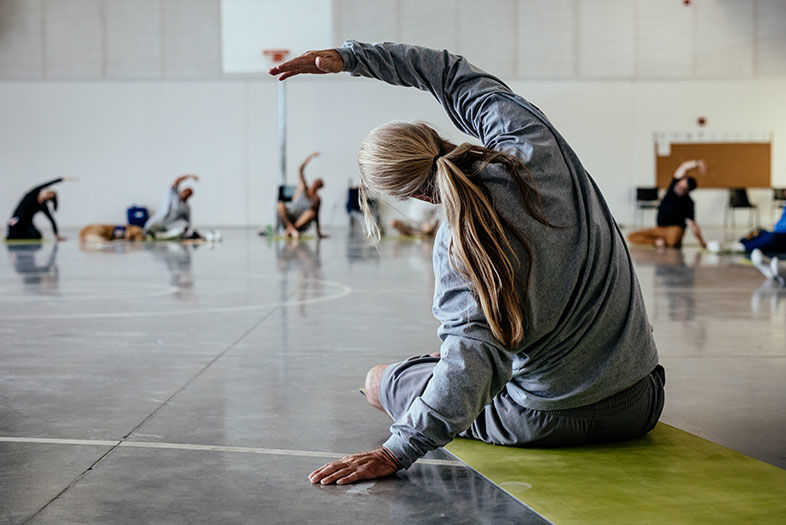
Finding Peace in a San Diego Prison
Balancing Act: Mark Phelps, an inmate since 1987, says yoga has helped bring him back to balance.
Grider, for instance, is serving 16 years to life for the second-degree murder of his grandmother. Bakersfield news outlets reported that he stabbed her in the throat 12 times, then made himself a peanut butter sandwich.
This mindfulness-based form of rehabilitation is the work of the Prison Yoga Project, a nonprofit that launched at San Quentin State Prison in 2002 and has since spawned programs at 10 other San Diego County facilities, and prisons throughout the US, as well as Mexico, the UK, and New Zealand. Their mission is to ease unresolved trauma, reduce stress, and reconnect an inmate’s mind, body, and heart in an effort to understand the damage they’ve inflicted—all through poses like pigeon and boat.
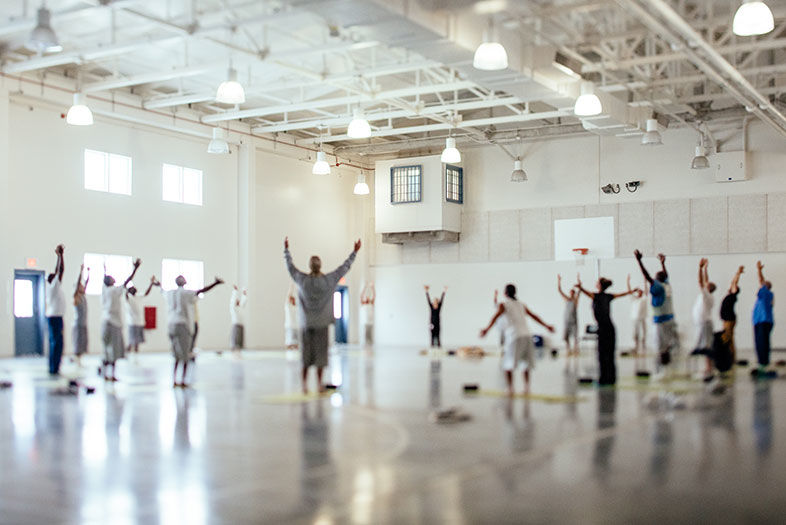
Finding Peace in a San Diego Prison
The project began occasional visits to Donovan in 2013, and a regular weekly class in April 2017. Brown joined as a volunteer instructor in 2012 and eventually became a regional coordinator after 20 years as a software developer. He organizes classes within correctional facilities throughout San Diego County, bringing highly trained volunteer teachers to run them.
He says he’s never felt uncomfortable visiting local correctional facilities. “It feels very chill—more chill than walking around Ocean Beach sometimes.” He adds that while life in prison is very regimented, yoga gives the inmates a means to make their own decisions about their physical responses to each movement, and perhaps rewire decades of disordered fight-or-flight responses.
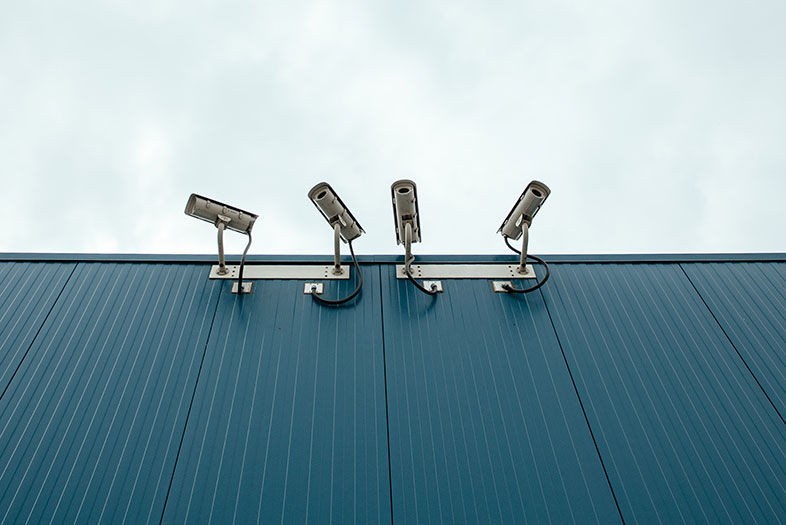
Finding Peace in a San Diego Prison
Breathing Room: The weekly one-hour classes take place in a gymnasium next to the prison yard, monitored by surveillance cameras.
“We don’t ask why anyone is there. A lot of these guys have had some pretty profound things happen to them, some sort of trauma in their life that led them to a behavior or lifestyle,” Brown explains. He says they don’t practice a particular style of yoga, though it might be most akin to hatha. “Our yoga practice is trauma informed. This is not just yoga as exercise. I say we teach to the nervous system. We’re teaching them to be more mindful, more self-aware.”
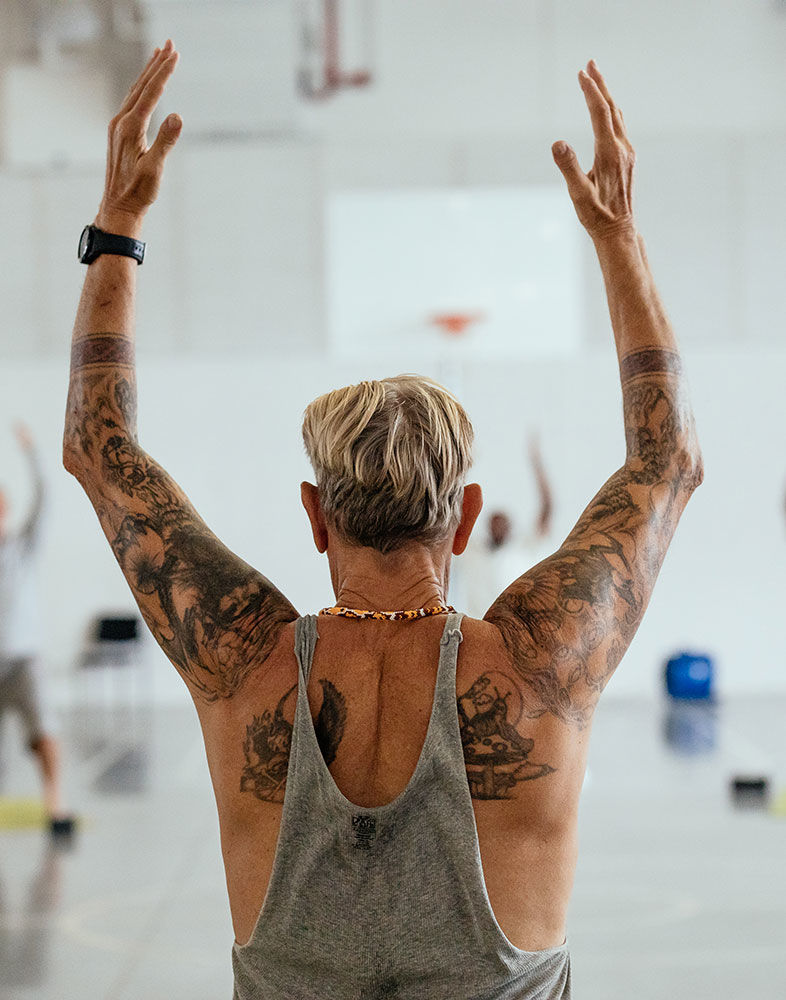
Finding Peace in a San Diego Prison
The classes are one hour, once a week. They’re limited to 25 participants, and there’s a waiting list.
Echo Yard inmates earn the opportunity to participate in educational programs that teach them life and job skills, from a victim-offender mental health curriculum to American Sign Language and service-dog training. It’s an experimental concept that emphasizes rehabilitation, and Donovan correctional officers say that so far, it’s been shown to reduce yard altercations and help prepare inmates for a potential return to life on the outside.
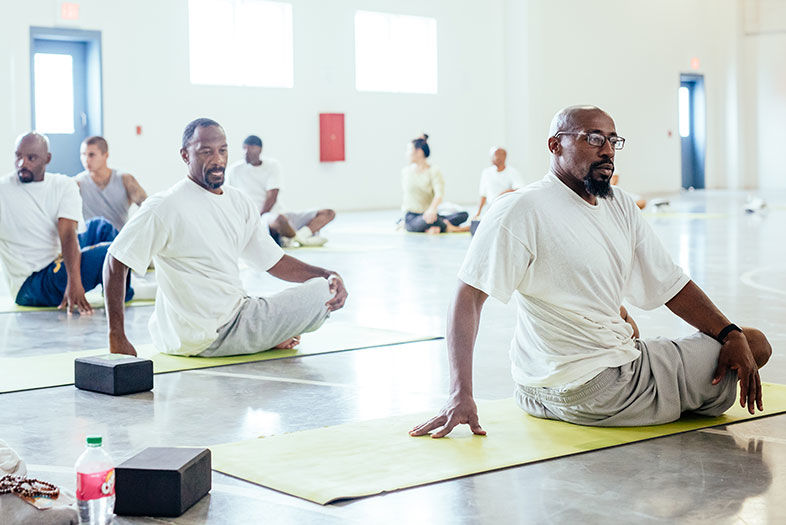
Finding Peace in a San Diego Prison
By Any Stretch: Inmates work through a seated spinal twist pose.
Mark Phelps, who’s been incarcerated since a 1987 shootout with sheriff’s deputies in North County, gets emotional when he talks about how Donovan’s programs, including yoga, have changed his demeanor. “It’s not just nonviolence; you have to practice compassion,” Phelps says. “This can bring you back to balance. I am more peaceful. My mom will tell you I’m a sweeter boy.”
William Jackson works through the poses in Saturday’s class with a broken hip, a chair and a cane stationed nearby for support. Serving his 36th year on a murder conviction, he says the exercise is adaptive and restorative. “Everybody here wants to go home. They’re trying to give us things that are therapeutic for us. I had never done yoga before in my whole life.”
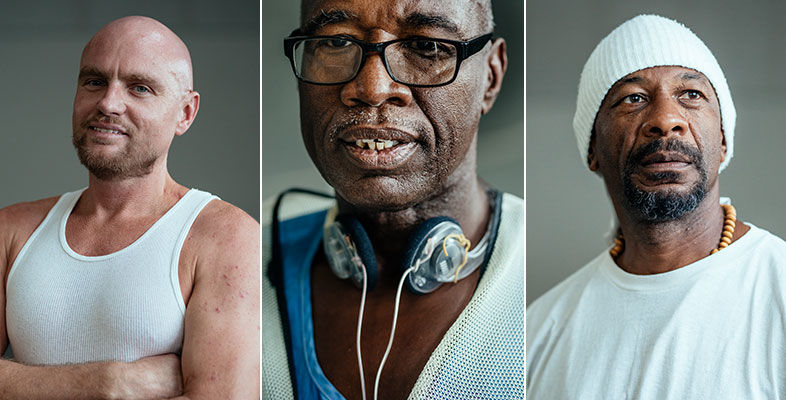
Finding Peace in a San Diego Prison
Left to Right: Ryan Grider, William Jackson, Terry Hurn
Terry Hurn has been incarcerated for 23 years, a third-strike offender for a series of burglaries. He was first introduced to the Prison Yoga Project at San Quentin. “Being in prison causes a lot of stress, so anything to calm that down,” he says. “Every aspect of our day, we’re dealing with a thousand different personalities. You have to know how to navigate through that. When someone says, ‘Take a step back and breathe,’ that is the yoga, just knowing how to adapt to different mindsets. You can’t expect everyone to think like you. Yoga has contributed to the welfare of my time here.”
Saturday’s class is quiet and serene, save for the keys clattering on the hip of a correctional officer as she goes about her paperwork. Brown leads the class “back to center,” finding a comfortable position on the yoga mats after a succession of strenuous poses. “Come to a place of stillness,” he says.
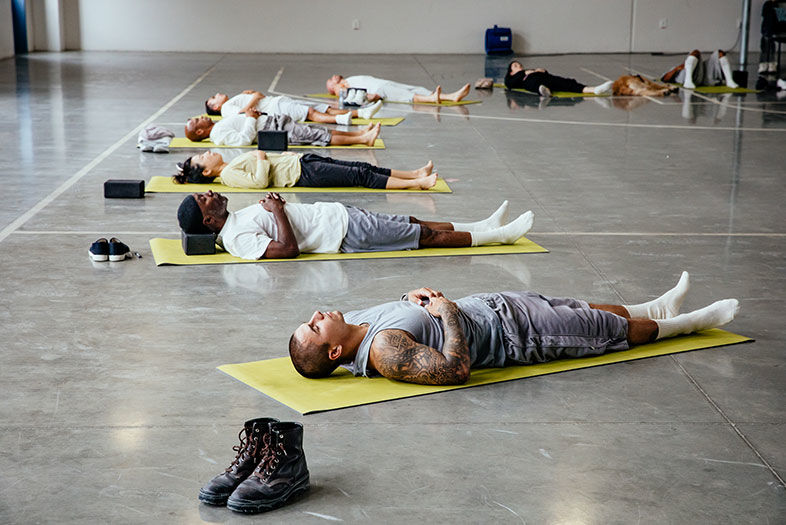
Finding Peace in a San Diego Prison
Calming Presence: Inmates are invited to “come to a place of stillness” on foam mats and blocks for reflection and meditation. The women pictured are volunteer yoga teachers.
The inmates are asked to visualize someone they care for, then someone they have neutral feelings for, and then someone with whom they don’t have a good relationship. In each instance, they’re asked to send that person a mental offering of love, light, health, happiness, and peace. And then they’re asked to extend that same offering to each other, and ultimately to themselves.
There’s a collective inhale and exhale. The hourlong class concludes and they roll up their mats. Officers unlock the gymnasium doors and it’s time to go back to the prison yard.
“These are just people,” Brown says. “There’s so much gratitude for what we’re doing. I truly believe in redemptive forgiveness.”
Want to get involved?
The Prison Yoga Project is hosting a teacher training workshop January 25–27 at Happy-U Yoga in Ocean Beach. For more details, visit prisonyoga.org.
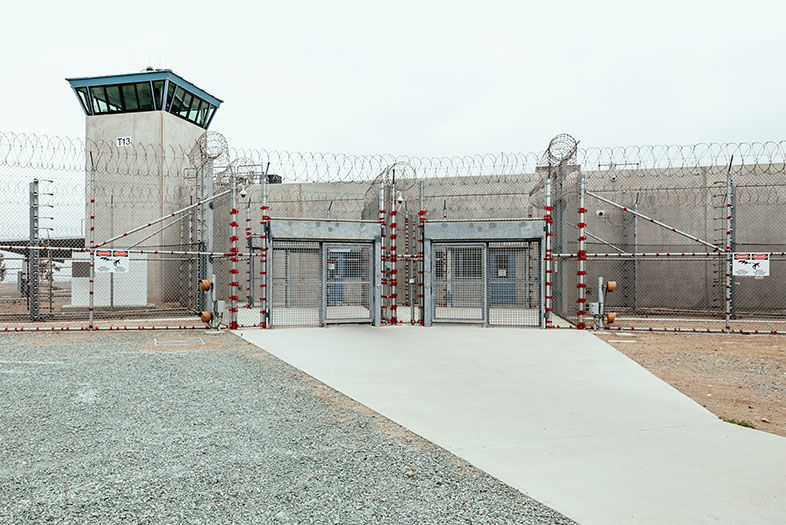
Finding Peace in a San Diego Prison
